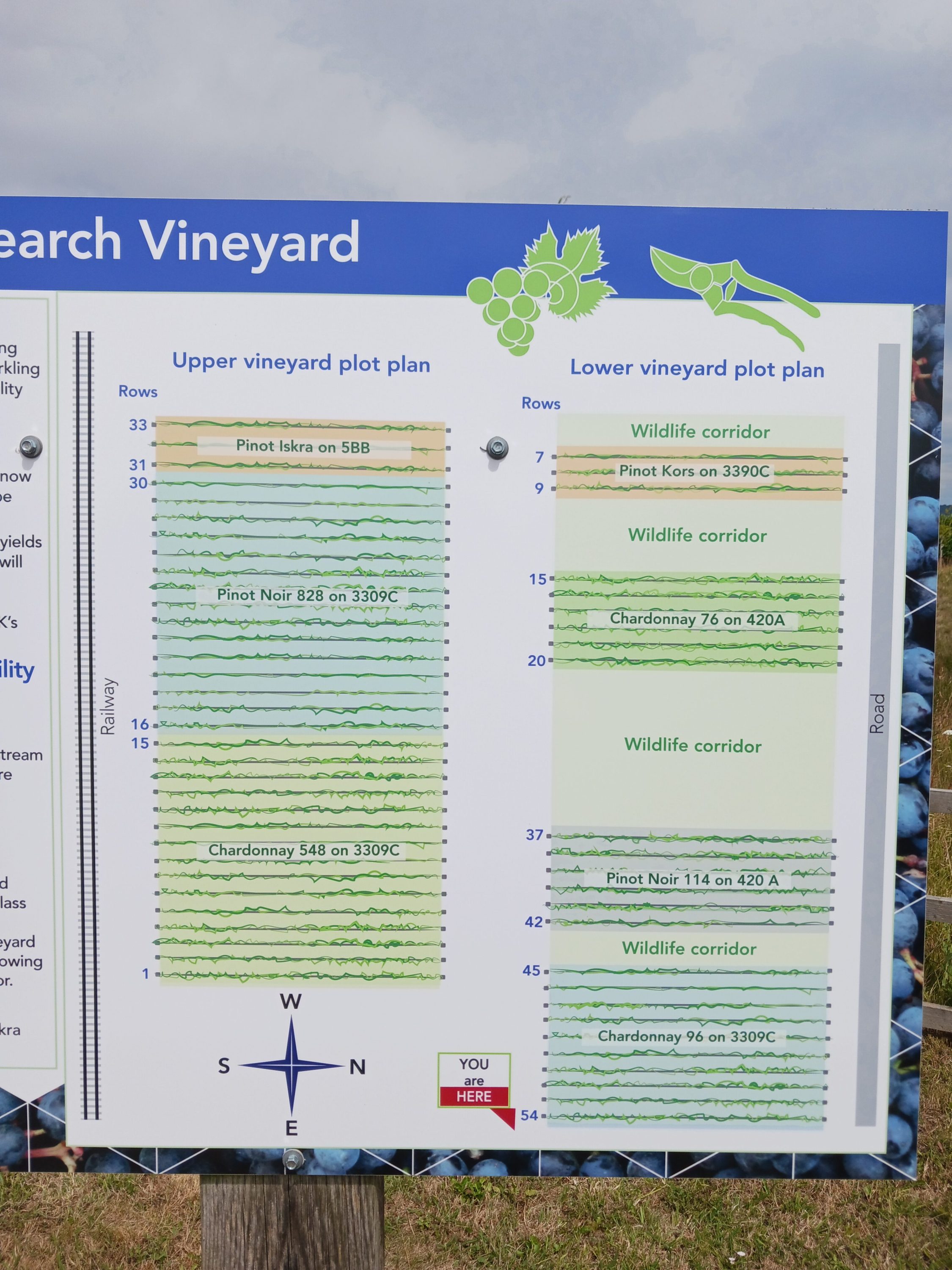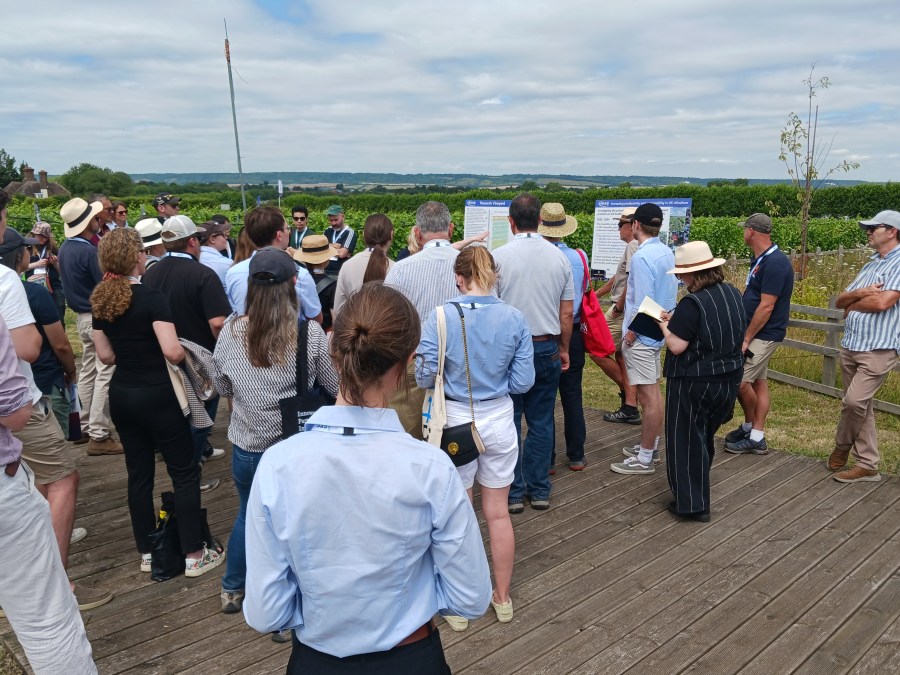On Wednesday 9 July 2025, NIAB at East Malling was once again the setting for Fruit Focus, a technical event concentrating on all things fruit related. An integral part of the schedule at this annual gathering that brings the trade and growers together was a tour of the research vineyards.
Leading a large party of visitors into one of the research vineyard, Dr Belinda Kemp explained that there are three vineyards at NIAB. Each vineyard has a different focus with one focussed on bio stimulants and bio control.
At the second vineyard visitors can view The Rhizome Lab, an underground facility (which looks a little like a nuclear bunker) providing a view of the underground roots systems of plants. Unique in the UK, it dates from the 1930’s and will soon have vine root systems available for research.
From the surface it is impossible to appreciate just what is available below ground. Walking through the underground tunnel there are 24 viewing windows from which the roots can be inspected. Once established the root system of the vines, expected to reach a depth of approximately 90cm, will be visible on both sides of the tunnel. Vine establishment at the facility cannot be hurried and so for the present time tours focus on the research vineyards above ground but this was an interesting preview of the research that will be on hand very soon.
The third research vineyard is dedicated to varieties that the industry wants. “We want the research we do to have the widest industry application,” said Dr Kemp. There are currently 15 rows of chardonnay with different clone and rootstock combinations such as clone 828 on 3309 rootstock.
There are also new plantings of disease resistant varieties. The vineyard has the first planting of Pinot Iskra in the UK. The variety was developed by Vivai Cooperativi Rauscedo (VCR), based in the small village of Rauscedo in Italy.
There are also new plantings of Pinot Kors which according to Dr Kemp has already had a commercial planting in the UK. Pinot Kors is another variety developed by VCR and Dr Kemp explained that these two disease resistant varieties have been choosen specifically for their Pinot parentage. “We already grow and fully ripen Pinot lineage grapes in England and Wales so these new planting are a reflection of that,” said Dr Kemp.
Dr Flora O’Brien gave the visitors an update on the ground cover crop management project that has been conducted over the last two years. This project looked at the different ways to establish cover crops comparing various crops including the difference between annuals and perennials. Dr O’Brien explained that 2022 had proved a difficult year for the establishment of cover crops but that Fava Bean had performed well across the project with a measurable increase in soil nitrate and therefore increased chlorophyll production and an increase in YAN. Dr O’Brien felt that the least successful crop to establish was clover.
Current research is underway relating to companion cropping and the possible benefits of attracting beneficial insects into vineyards. Research has pointed to Camomile as a useful species. “It is sown late, looks pretty, is a useful source of food for many insects and is low enough not to interfere with vineyard operations,” pointed out one of the researchers on the project. One of the early results of work in this area has been noticed in a partner vineyard where rare Pyramidal Orchids have appeared for the first time.
Dr Kemp explained that companion plants that attract ladybirds and lacewings can be really helpful in repelling Grape Vine Blister Mite. As the name suggests, affected vines will exhibit what look like small blisters on the leaves. Until 2017 this was considered to be of little danger to vines but in 2017 it was discovered that blister mite is responsible for Pinot Gris Virus which is now known to affect 30 vine varieties worldwide. “It looks like someone has poured weedkiller on a vine and can result in 96% destruction of a crop,” said Dr Kemp. This really underlines the value of independent research facilities such as NIAB.
On the theme of different plants for different uses in the vineyard, a member of the audience mentioned that he would like to know if there was the possibility for research to be carried out on the success of dead end host plants such as pyracantha for SWD. As with all research in these areas, funding will be the ultimate driver of what projects can be undertaken at NIAB but there is a definite focus on making all research relevant to commercial growers in England and Wales.




